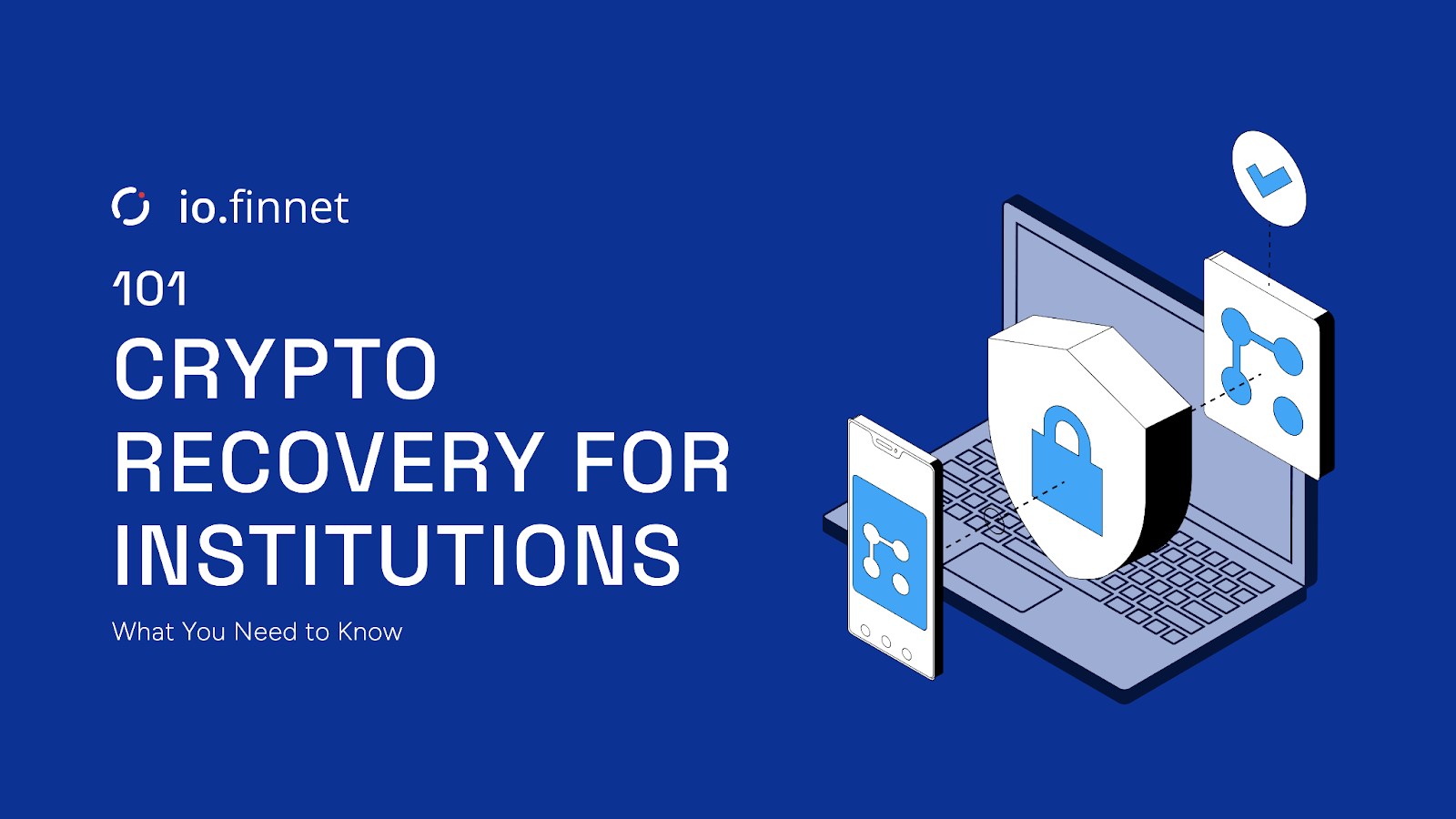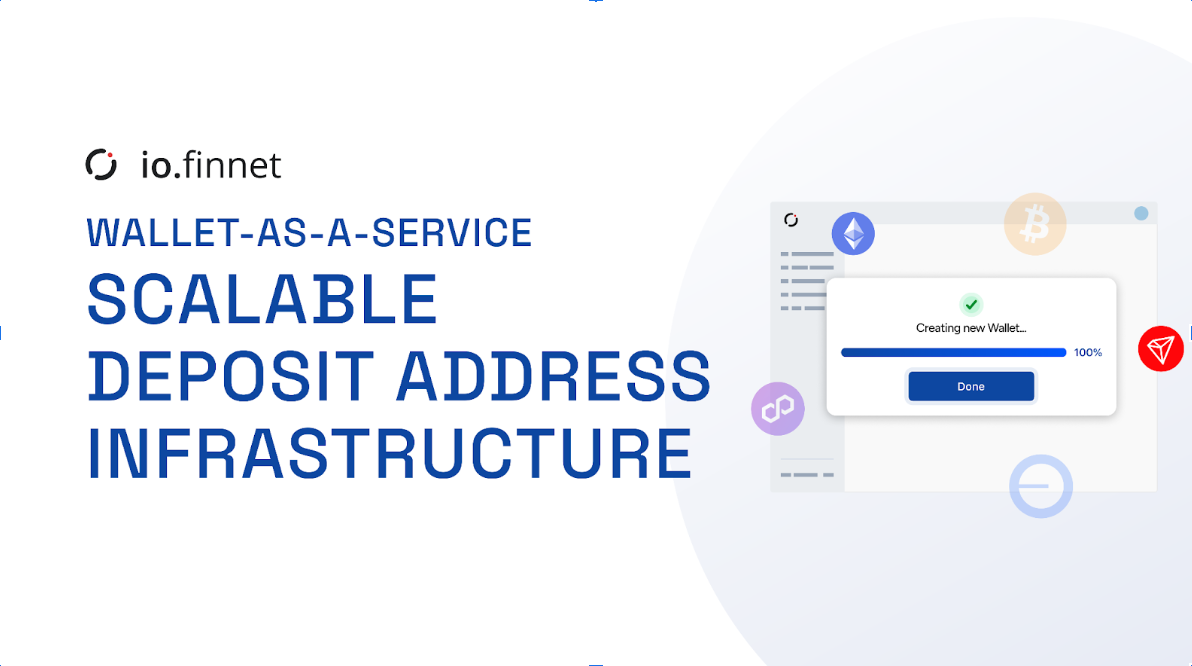LEARN
Crypto Recovery for Institutions: What You Need to Know
Institutions working with crypto face more than just financial risk; lost assets can trigger operational failures, damage their reputation, and invite regulatory scrutiny.
Unlike traditional finance, there’s no formal recovery channel for most crypto losses. There are no chargebacks or dispute desks.
Once a transaction settles, it’s often final. In a fast-moving cryptocurrency market, this finality leaves institutions with little room to respond.
That’s why crypto recovery isn't just a technical challenge.
It’s a question of governance, infrastructure, and readiness.
In this post, we’ll explore the barriers to institutional crypto recovery, what institutions can do after a loss, and why prevention-first custody solutions offer the best way forward.

Further reading:
- Interested in learning more about self-custody? Explore how it works.
- Take a deep dive into what a crypto vault is and how it protects your assets.
- Explore the best enterprise crypto wallets in 2025.
This Article Contains
- Challenges and Solutions with Institutional Crypto Recovery
- What Institutions Can (and Can’t) Do After a Digital Asset Loss
- Avoiding the Trap: Common Crypto Recovery Scams
- Understanding Crypto Recovery Limitations
- Designing for Resilience: The io.finnet Approach to Secure, Recoverable Custody
Institutional crypto loss isn’t just a financial issue; it’s a regulatory, operational, and reputational threat. Unlike retail investors, institutions can’t shrug off lost assets. They’re expected to explain what happened, why controls failed, and how it won’t happen again.
The Institutional Recovery Dilemma
Traditional finance offers tools like wire recalls or chargebacks. Crypto doesn’t. Once crypto assets are gone, there’s often no formal recovery channel. Institutions operate in a high-stakes environment with few safety nets and no margin for error. The solution lies in custody systems built with recovery protocols and internal controls from the start.
Operational Challenges
Crypto transactions settle fast and are irreversible. That leaves little time to detect or respond to unauthorized activity. Without real-time monitoring and automated policy enforcement, institutions are often too late to intervene in a crypto scam.
Documentation adds another layer of risk. Auditors want clear custody trails, but many crypto systems make it hard to prove governance was enforced in the moment. Institutions need infrastructure that logs and enforces every action by design.
Fraud and Insider Threats
Manual overrides, weak approval flows, or loosely managed multisig wallet setups leave room for abuse. Recovery paths without proper controls can become attack vectors.
Effective systems separate duties. The person who initiates a recovery should never be the one who approves or executes it. Every action must follow predefined workflows with audit trails, policy checks, and enforced delays to prevent rushed or malicious decisions. This operational governance level is only possible with infrastructure that enforces rules at the protocol level.
The Regulatory Reality Check
Regulators are watching crypto operations closely, and they expect you to maintain the same standards for crypto assets as you do for traditional securities. With rising incidents of cryptocurrency fraud, those expectations are only increasing. However, most crypto infrastructure still lacks the recovery mechanisms regulators expect.
Cross-border compliance remains a minefield. Each jurisdiction has its own reporting requirements, and with no standardized cryptocurrency law for incident reporting, institutions are often forced to create their own playbook. Proactive institutions are building internal frameworks that map to evolving global expectations while ensuring control never leaves their hands.
Without proper audit trails, proving compliance with cryptocurrency law becomes nearly impossible.
Building Your Defense Strategy
Leading institutions don’t gamble on a cryptocurrency recovery service. They build infrastructure that removes single points of failure and includes the recovery process as a core capability. With distributed key control, enforced policies, and disaster recovery protocols, loss prevention becomes part of daily operations.
Tools like multi-sig and time-delayed transactions help, but only when integrated into workflows without adding friction or complexity.
The strongest defense strategies combine technical safeguards, insurance coverage, and tested incident response plans. These layers work together to ensure resilience, transparency, and regulatory accountability.
In most enterprise blockchain environments, recovery isn’t guaranteed, and in many cases, it’s not possible.
What’s (Sometimes) Recoverable
Some forms of loss can be investigated and, in rare cases, reversed or recouped, but it depends on how the loss occurred and what infrastructure was in place:
- Blockchain forensics may help trace an on-chain cryptocurrency scam or hack, especially if the stolen funds move through a known crypto wallet or exchange that cooperates with authorities.
- Lost cryptocurrency due to mistaken transactions might be recoverable if they happened within centralized platforms that offer some internal remediation.
- Lost access due to personnel turnover or quorum breakdowns can sometimes be resolved, but only if your custody infrastructure includes flexible key rotation, role-based access, or recovery protocols.
What’s Irrecoverable
These are the types of losses that, without proactive safeguards in place, typically result in permanent asset loss.
- A lost private key or corrupted seed phrase with no backup or recovery policy is often a permanent loss.
- Unauthorized transactions on decentralized platforms settle in minutes and can’t be reversed.
- Inadequate logging or unclear audit trails make it almost impossible to prove what happened, let alone recover lost funds or satisfy regulators.
And when recovery isn’t possible, bad actors are ready to exploit that desperation, often with a cryptocurrency scam disguised as a solution.
Some losses are permanent, especially when cryptocurrency assets are sent to inaccessible addresses, compromised without backups, or lost due to irreversible human error or a cryptocurrency recovery scam.
“We Can Recover Any Crypto” Claims
While there are legitimate crypto recovery companies, be skeptical of any recovery service that guarantees results. In many cases, if your crypto is lost due to key loss, unauthorized transfers, or a compromised wallet, there’s no technical way to get it back, especially on public blockchains. Scammers exploit this by promoting what’s essentially a cryptocurrency recovery scam, promising miracles they can’t deliver.
Upfront Fees for Fake Forensic Services
A legitimate crypto recovery service or analytics firm won’t solicit victims or demand large upfront payments for vague services. Many scams mimic real forensic services, offering to “track and trace” stolen assets and then disappearing once they’ve received the payment.
Impersonation of Regulatory or Legal Entities
Some asset recovery scams involve fake lawyers or government agents claiming they can recover your lost funds through legal channels, often requesting sensitive information or payment for “processing.” Legitimate crypto recovery companies won’t cold-contact you about lost or stolen funds, and any legal process would involve your counsel.
Social Engineering and Insider Exploits
In some cases, scammers pose as crypto asset recovery specialists to gain access to internal systems or convince employees to share sensitive custody information. These social engineering attacks are especially dangerous at institutions without enforced role separation and transaction policies.
"Pig Butchering" Scams
Pig butchering is a long-term crypto scam where scammers build trust with victims, often posing as helpful insiders, romantic interests, or business contacts, before convincing them to “recover” or reinvest lost or stolen cryptocurrency into fake platforms. Victims are often targeted after suffering losses on crypto investments, making them emotionally vulnerable and easier to manipulate. These highly personalized scams often involve months of psychological manipulation before the final “butchering” cash-out.
Despite the growing ecosystem of blockchain analytics and custodial tooling, the harsh reality remains: crypto recovery has fundamental limitations, both technical and operational.
Success Rates and Realistic Expectations
Crypto recovery rarely succeeds. Most lost or stolen assets are never retrieved, even with professional help. The few successful cases usually depend on exchange cooperation, law enforcement intervention, or simple technical errors. Sophisticated crypto theft, insider misuse, and lost keys are almost always final. Institutions should treat recovery as a contingency, not a strategy.
Technical Barriers to Recovery
The immutability of blockchain technology means transactions cannot be reversed once confirmed. Unlike traditional systems, there’s no support for password recovery or to freeze or recall lost cryptocurrency. Most crypto transfers are final within minutes, and losses often go undetected until it's too late. Without real-time monitoring and automated controls, recovery is nearly impossible. The lack of centralized controls makes it nearly impossible to respond quickly to unauthorized access or theft.
Timeline and Resource Requirements
Even in the best-case scenarios, successful recovery takes time. Investigations, forensic analysis, and cross-border legal action often stretch for months or years. For institutions reporting on quarterly cycles, this timeline doesn’t work. Recovery efforts simply can’t match the speed or accountability modern finance demands.
Cost-Benefit Analysis for Institutions
The economics of crypto recovery often don’t add up. Forensic investigations and legal action can cost six figures, with no guarantee of success. When paired with low successful recovery rates and extended timelines, the total effort often exceeds the value of the assets at stake. And if the loss stems from cryptocurrency fraud, recovery may be both technically and legally unfeasible.
That’s why leading institutions are shifting away from reactive recovery plans toward prevention-first custody models. The focus is on designing systems that make loss unlikely in the first place. This improves financial outcomes and regulatory defensibility through built-in governance, access control, and auditability.
io.finnet takes a prevention-first approach to institutional crypto custody by replacing vulnerable key structures with distributed, policy-driven security. There is no private key to lose or reset. Instead, assets are secured using trustless Multi-Party Computation, with key shares distributed across multiple signers and controlled by policy.

If access is compromised or a device is lost, institutions can initiate recovery using encrypted backup files and recovery phrases. The recovery process requires no third-party intervention and operates entirely within the organization’s control.
Predefined policies govern every transaction and recovery operation. Role-based access, quorum approvals, audit logs, and time-based delays are enforced automatically by io.finnet’s Virtual Signer.
This approach gives institutions a secure self-custody solution that’s compliant and resilient by design. Recovery is not a last-minute patch but a core part of the architecture.
From Risk to Resilience: How io.finnet Redefines Crypto Custody
Crypto recovery shouldn’t be a scramble after a loss. It should be built into your infrastructure from the start. For institutions, the real strategy is prevention, not reaction.
io.finnet makes this possible. Its trustless MPC framework removes vulnerable key structures, enforces policy at the protocol level, and enables secure, self-managed recovery when it’s needed most.
With io.finnet, institutions don’t just reduce risk. They gain a custody system purpose-built for operational resilience, regulatory confidence, and long-term control. In an increasingly regulated and high-stakes cryptocurrency market, that level of control is essential.
Take the next step. Secure your crypto with io.finnet, where custody and recovery work together by design.


.svg)




